
Liposuction in tumescent local anaesthesia, and vibration-assisted technique with fine cannulas is the gold standard in liposuction surgery. My experience is based on personally performing about 150 liposuctions per year and this in the last 20 years of my practice. The Hirslanden Klinki St. Anna in Meggen offers the optimal facilities for performing the procedure in state-of-the-art operating rooms, excellent care during and immediately after surgery by the anaesthesia team, and comfortable all-round care during the first two nights at the clinic. Safety for the patient is always the top priority here.
Tumescent local anaesthesia
Tumescent local anaesthesia (lat. tumescere: to swell) is a special form of local anaesthesia that is very suitable for preparing fatty tissue for liposuction. Here, the fatty tissue to be treated is swollen and homogenized with a highly diluted local anaesthetic saline solution. Anaesthesia or twilight sleep are not required for liposuction. For relaxation, of course, sedative and analgesic medications can be administered through the vein before, and also during the infiltration phase. At the end of the infiltration phase, and about 30 – 60 min later, the tissue feels very plump and firm. After the tumescent local anaesthetic solution has been left to act for about half an hour, the treatment zones are pain-free. The patient is able to actively position himself on the operating table and tense up the muscles during the subsequent suctioning as needed. These are the best conditions for an effective, pain-free treatment and excellent aesthetic results.
Liposuction procedure
The fat is removed using thin (2 – 4 mm Ø), 15 – 30 cm long, hollow cannulas, which are driven by an electric motor to vibrate at a high frequency. This vibration-assisted liposuction technique under tumescent local anaesthesia makes gentle and uniform removal of the excessive fat cells possible. The cannulas are passed through the skin via some small incisions (3-5 mm) and then pushed forward and back, parallel to the skin surface in a fan-like pattern. The suction separates the fat cells from the adjacent tissue and removes the fatty tissue through a tube. The fat cells are collected in a sterile container with some of the anaesthetic solution. In one session, up to 85% of the fat cells or as much as 5 liters of pure fat can be removed. The connective tissue fibers remain in place and are instrumental in the process of tissue shrinkage during the healing phase. During liposuction the patient experiences a rubbing or scratching sensation under the skin; this is caused by the vibration of the cannula and the tugging on the connective tissue fibers. Some patients also describe an almost pleasant feeling of an „internal massage“. If any of the sensations become too unpleasant, it is possible to administer intravenous medications to relieve the symptoms. In any case the entire procedure, which lasts 30-60 minutes, is well-tolerated by almost every patient.

After the procedure
Immediately after the liposuction, the tiny skin incisions are not sutured, but only covered with sterile dressings. The remaining tumescent local anaesthetic solution leaks out precisely through these incisions; to a greater extent in the following hours and to a lesser extent in the following 4-6 days. This “post-operative drainage time” is somewhat unpleasant, but highly desirable. The tissue is almost completely pain-free in the first hours after liposuction. The saline solution plus drugs are not completely resorbed by the body but drained out, and the liver has not to metabolize. Furtheron bruises are much less common after liposuction in tumescent local anaesthesia, as compared to other techniques.
Highly absorbant diapers used under special compression garments keep the patients dry. The compression causes that the excessive fluid flows outwards, and at the same time insures close contact of the loose skin and the underlying tissue layers. The adhesion of the multiple tissue layers in the right position is one of the critical factors in making liposuction procedure a success. The compression garments should be worn all around the clock for one week, and then during daytime for another 2-3 weeks. However, it is allowed to take a shower already on the first day after surgery, – without the compression garment! When the neck is treated by liposuction, patients are advised to wear a collar-like compression dressing for a short period of time – one day all around the clock – and then for the rest of a week only at home and during nighttime.
Immediately after surgery and also in the next few days, the patient should be active and drink a lot (3-4 liters a day). This is good for blood circulation and the best prophylaxis of thrombosis. Additionally antithrombotic injections (low molecular weight heparin) and an oral antibiotic (cephalosporin) are prescribed for 5-7 days. An analgesic (ibuprofen) may be taken as needed, recommended due to its beneficial anti-inflammatory and decongestant effects. The discomfort after liposuction is most comparable to severe “muscle soreness” and is usually well tolerated.
A two night stay at the Hirslanden Klinik St. Anna in Meggen is from a medical point of view advisable for larger liposuction procedures, or if you have to travel a long way to the clinic, and is also very comfortable. The nurses take care of the frequent changes of the absorbant dressings, required initially. After a shower in the morning, a medical check-up and a new dressing change, the patient can travel home relaxed and “well packed”. An emergency cell phone number ensures that I can be reached anytime by phone, if anything is unclear or disturbing.
Follow-up Care
The first follow-up exam takes place on the morning after surgery. After some check-up the dressings will be changed. In those incision sites where drainage has already stopped, steristrips are applied for wound adaptation. They should be left in place for up to 10 days. The normal wound healing process leads to a slight collection of fluids and swelling during the first 4-6 weeks after liposuction. Although this process is somehow frustrating, it is inevitable and necessary for normal healing processes. Usually patients can return to work after 7 days, depending on occupation and physical exertion. Sports should be avoided for 2 weeks, while tub baths, swimming, and sauna should be avoided for 4 weeks. Taking a shower is allowed immediately, on the first day after surgery.
A next medical follow-up exam is advisable after 10-14 days. Manual lymphatic drainage is recommended, performed by an experienced physical therapist or masseur, supporting a rapid reduction of swelling and bruising. Regular massage of the treatment areas is also very helpful, using a gentle body cream or lotion.
The results
The cosmetic results can first be evaluated after 4, better after 6 months. This healing time is really needed before you can discuss the changes actually. Even after 12 months further improvements in body contours, as well as in smooth- and skin tightness are obvious. After 6 months photodocumentation will clearly show the difference and the improvement – and before and after pictures will cause happiness not only for the patient, but also for the doctor.
Who can be helped?
The legs are the most common site in women where liposuction is performed. The usual treatment indication are the „saddle bags“ – excessive deposit of fat on the outer thighs – which are difficult to reduce either with diet or exercise. The proportions are simply wrong. Denims are very tight on the thighs, and at the same time hopelessly loose around the waist. That is the classic situation patients point out almost daily. The inner thighs and knees are another problem zone. Often the patient’s mobility is hampered – skin rubs on skin, or fabric on fabric. If the excessive fat deposits are located on the inner knees, they may lead to an unattractive X-position of the whole legs. Sometimes the calves are the problem. One can’t even think of wearing a skirt, a dress or shorts. Boots and ski boots are not possible to find in an appropriate version. The reason are not overtrained legs – just stubborn localized fat deposits. Finally liposuction is the only way to achieve longlasting improvement on the legs and arms in women with lipedema.
What is possible?
Vibration-assisted liposuction using tumescent local anaesthesia makes possible a targeted, gentle, long-term removal of the cosmetically-disturbing, excessive fat deposits. The post-operative results are of course subject to the same forces of aging as normal tissue, but are relatively permanent, as long as nutritian and exercises are adequate. Cellulite generally improves during the healing process and the skin is thightening. Attractive legs can usually be achieved only by treatment of multiple zones. One single treatment zone on the legs rarely achieves the desired result. In some cases even 2-3 liposuction procedures are needed to produce the desired results. In a personal consultation the best approach for your legs and desires will be discussed.
Special features
The calves normally heal in slow motion. Post-operative swelling is greater and lasts longer, due to the “gravity position” of the lower legs. Compression knee stockings may be very useful and comfortable for several weeks after surgery. Cooler months are prefered undergoing liposuction of the calves.
Before- / After-Pictures
The following images present the before & after – documentation of some of my patients. In a personal consultation I would be happy to show you more examples, and discuss the best approach in your case.
Patient 1
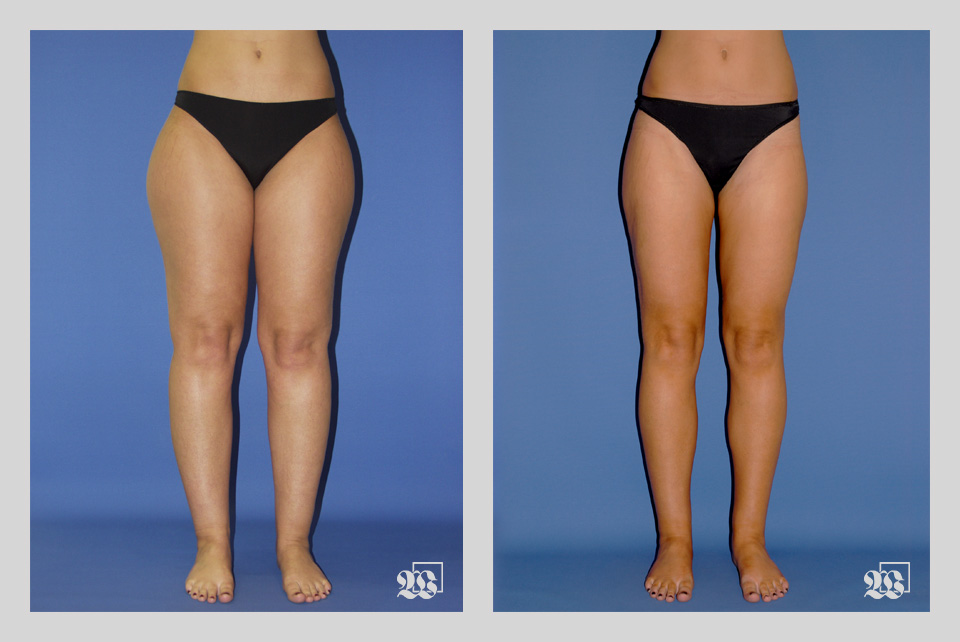
Patient 1
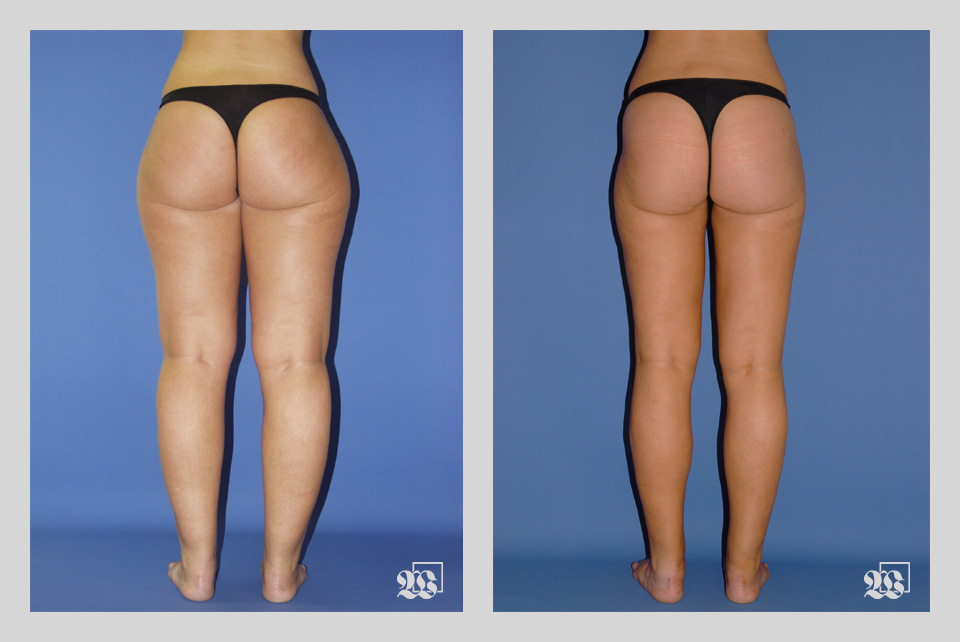
Patient 2
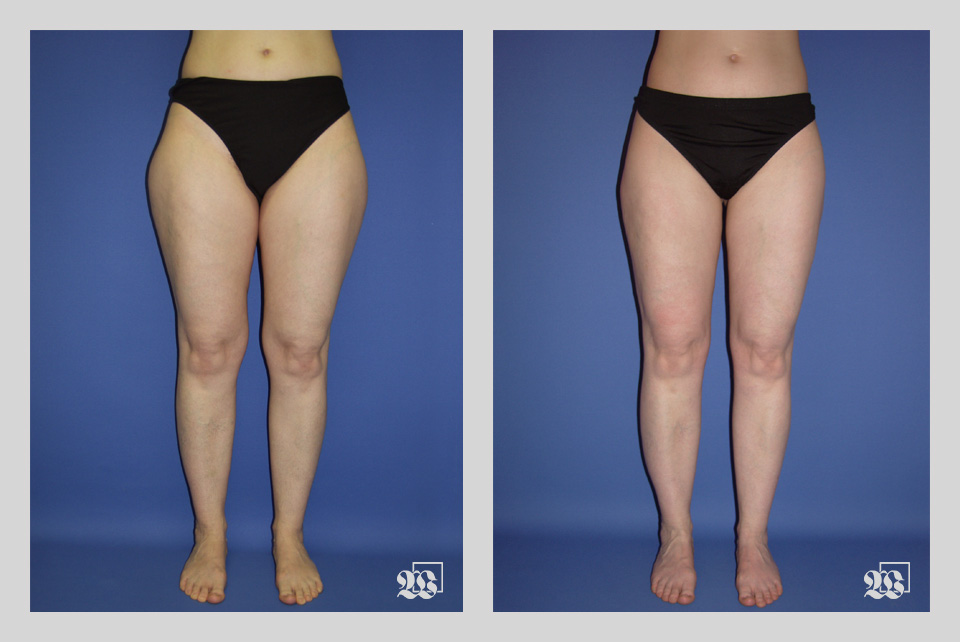
Patient 2
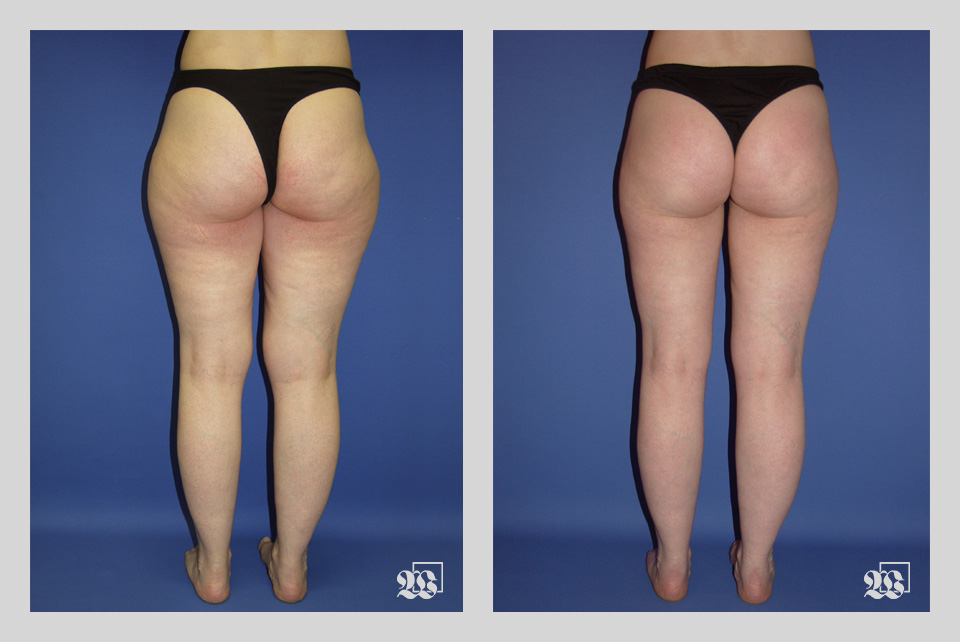
Patient 3
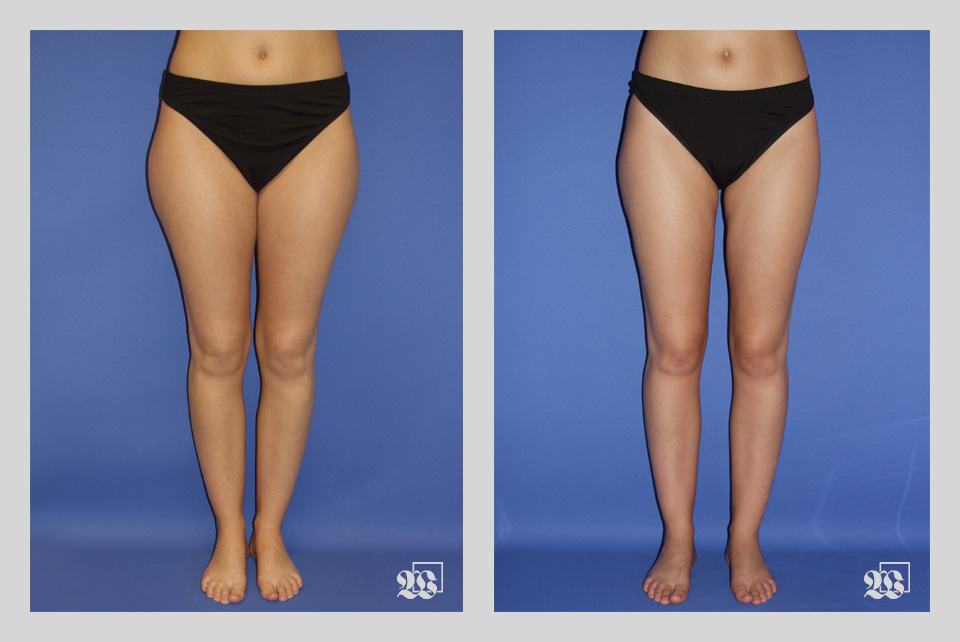
Patient 3
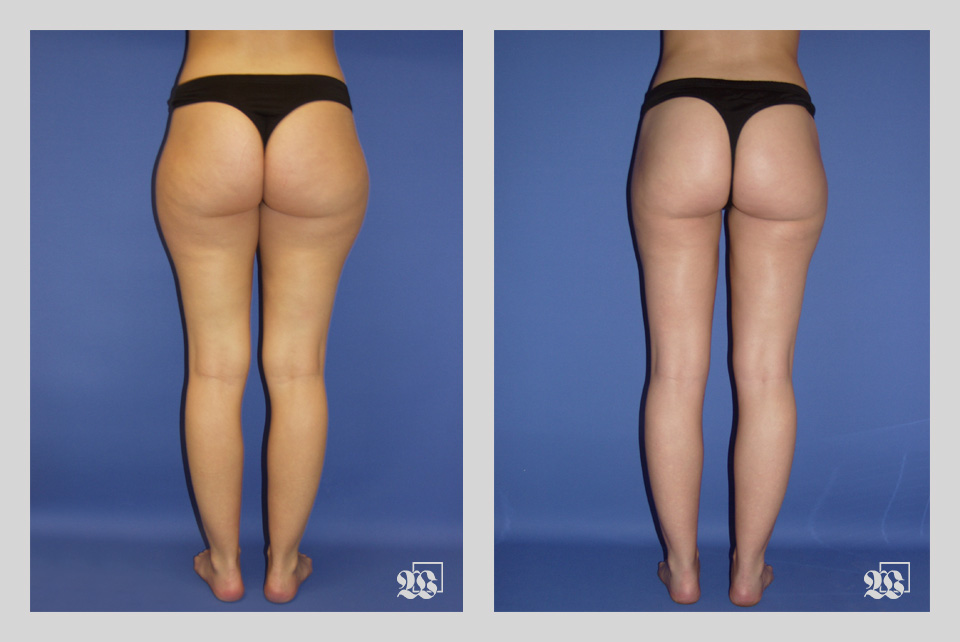
Who can be helped?
Slim women and even men in good physical condition can still suffer from a prominent belly. Sometimes the proportions just aren’t right. The waist has disappeared and the abdomen rolls over into the hips. Multiple pregnancies are sometimes the explanation for an inability to retain the original desired body shape, despite adequate exercise and healthy nutrition. Men may complain of “high hips” and enlarged breasts. It is unpleasant for a man when his breasts are marking out under T-shirts or his hips give a feminine silhouette. These problem zones are extremely difficult to address and sometimes improvement seems impossible, …but fortunately there is liposuction.
What is possible?
Vibration-assisted liposuction using tumescent local anaesthesia makes possible a targeted, gentle, long-term removal of the cosmetically-disturbing, excessive fat deposits. The post-operative results are of course subject to the same forces of aging as normal tissue, but are relatively permanent, as long as nutritian and exercises are adequate. Cellulite generally improves during the healing process and the skin is thightening. One single treatment zone on the body rarely achieves the desired result and a harmonized silhouette. The upper and lower aspects of the abdomen are therefore treated in very most cases along with the waist and hips. In contrast, liposuction of the male breasts is often done as an isolated procedure. It is amazing how skin contracts and tightens after liposuction on the abdomen and breasts. Even after massive fat removal of a “hanging belly“ or an “apron of fat“, the loose an excessive skin contracts quite well. Surgical removal of excessive skin is needed only in rare cases, and in order to make a result more perfect. An abdominoplasty or belly tuck should be primarily planed, if there is very loose tissue, little fat and large amounts of excessive skin with folds and stretch marks. In a personal consultation the best approach for you and your desires will be discussed.
Special features
Before undergoing abdominal liposuction a medical examination of the abdominal wall is mandatory. An umbilical hernia or any other kind an abdominal hernia are contraindications to do liposuction. These have to be closed by surgery before any cosmetic procedure can be considered. The risk of an injury of deeper structures, bowel and organs, which are usually protected by the abdominal muscles, is simply too high. Safety comes first.
Men with enlarged breasts may also be evaluated pre-operatively. Gynecomastia refers to increased amounts of breast tissue rather than fat and may be idiopathic or reflect underlying hormonal disturbances. Breast tissue can be distinguished from fat using ultrasonography or mammography. In very rare case malignant breast tumours have to be excluded.
Before- / After-Pictures
The following images present the before & after – documentation of some of my patients. In a personal consultation I would be happy to show you more examples, and discuss the best approach in your case.
Patient 1
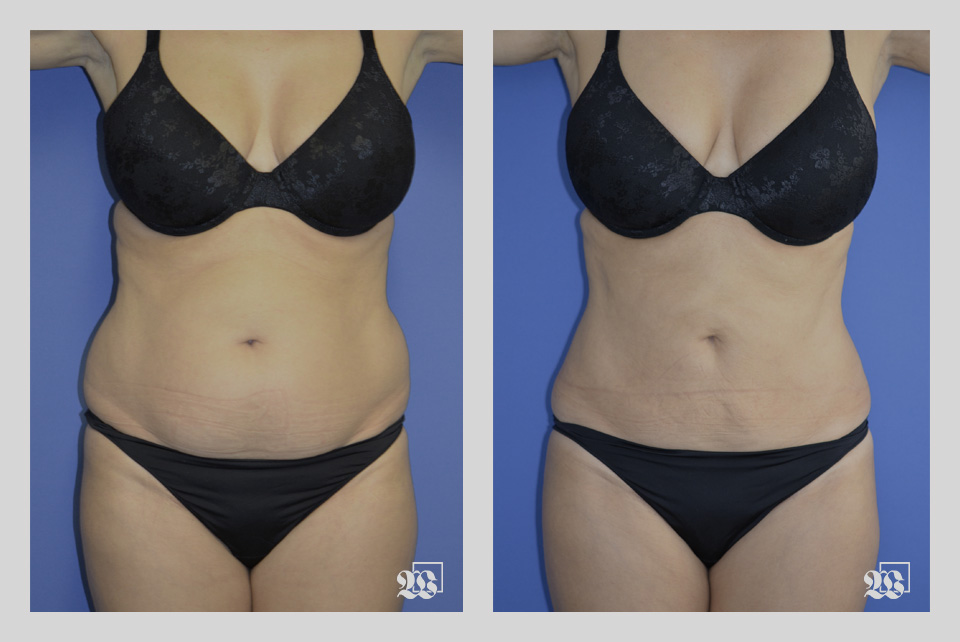
Patient 1

Patient 2
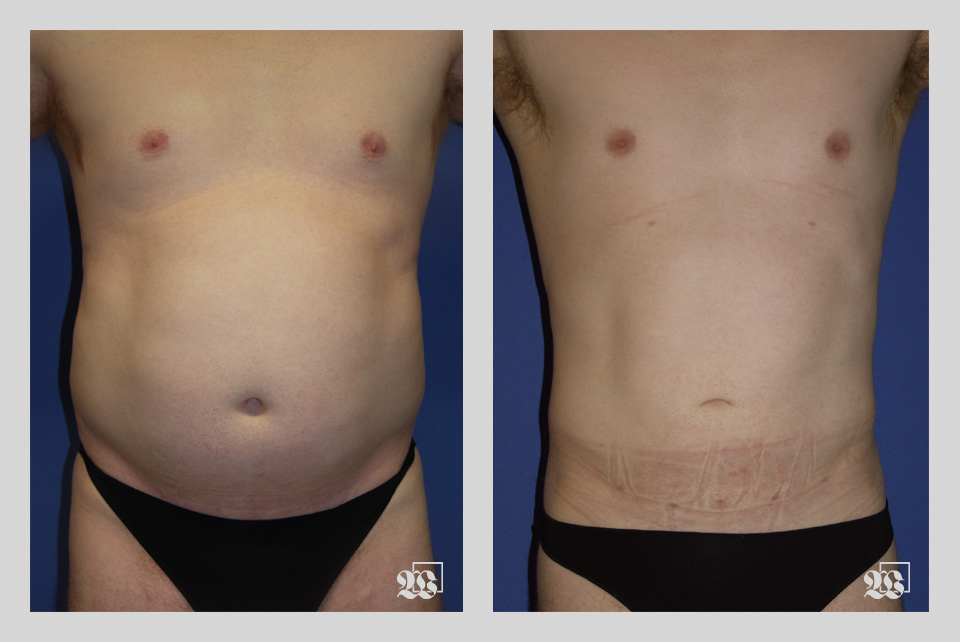
Patient 2
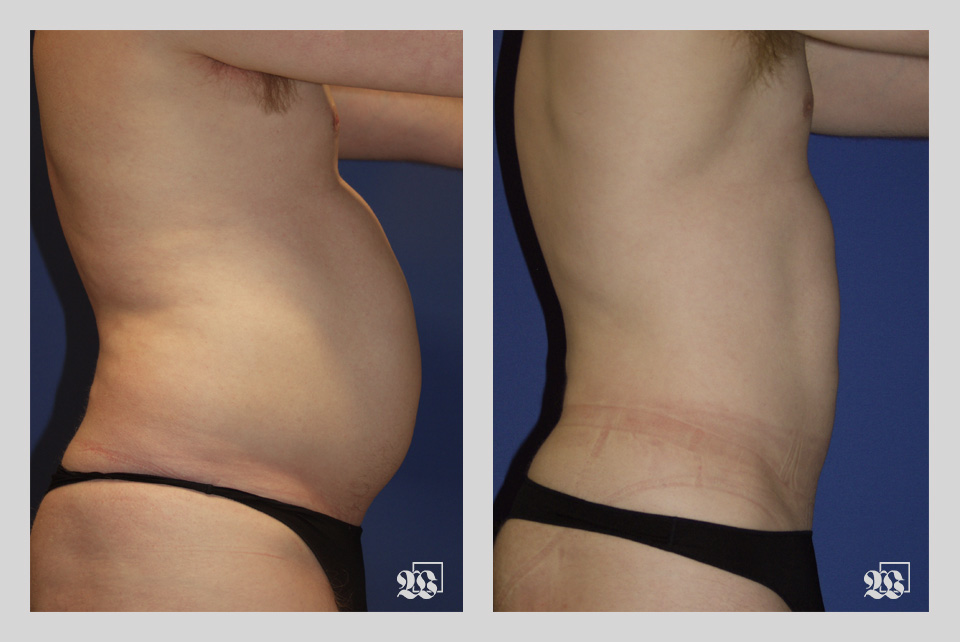
Patient 3
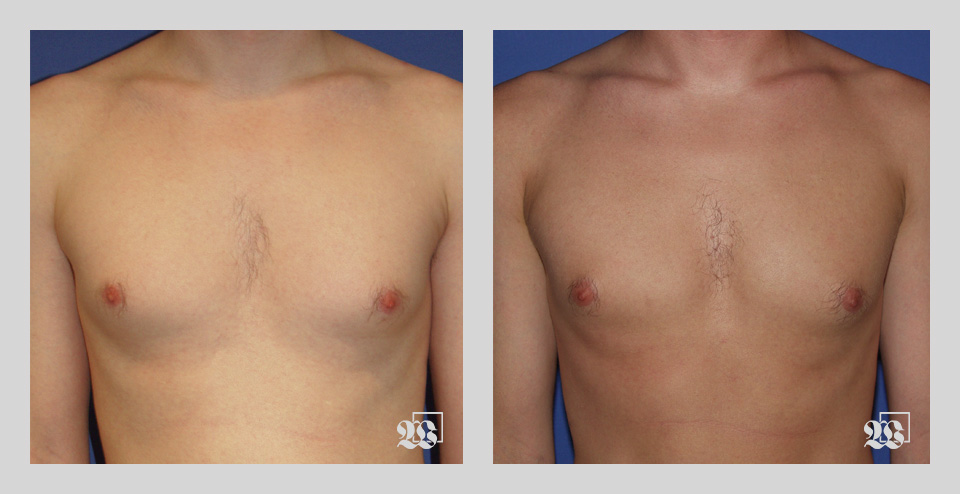
Patient 3
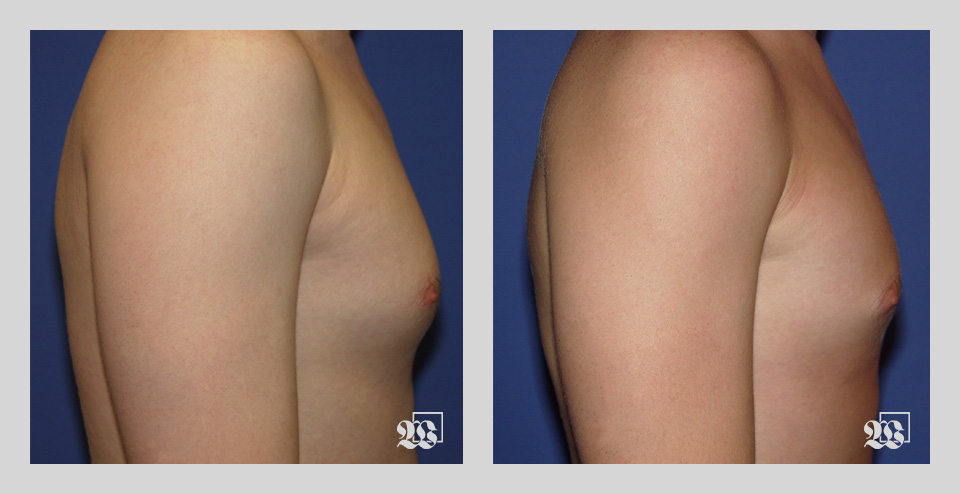
Patient 4
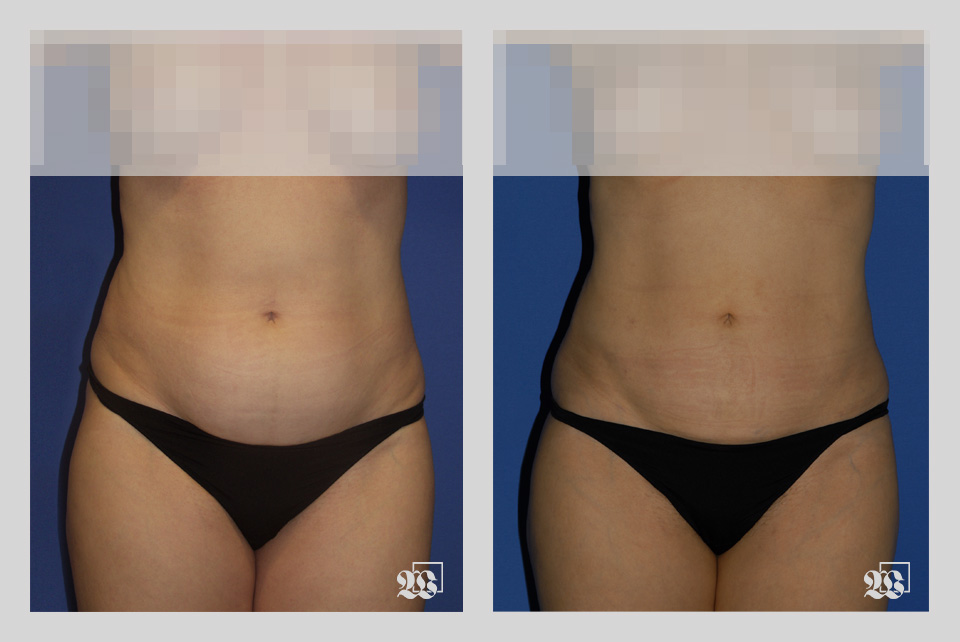
Patient 4
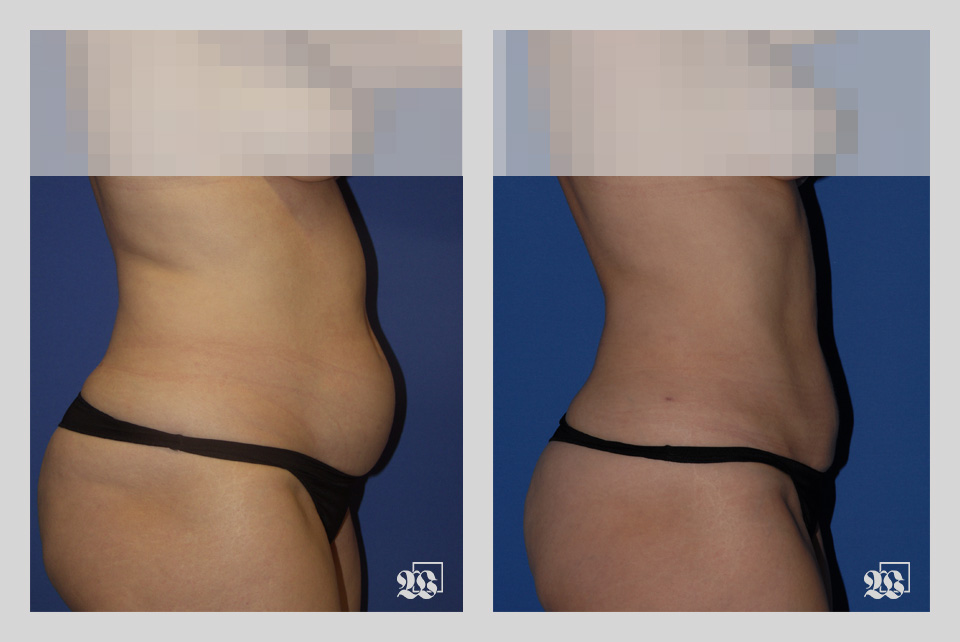
Patient 5

Patient 5
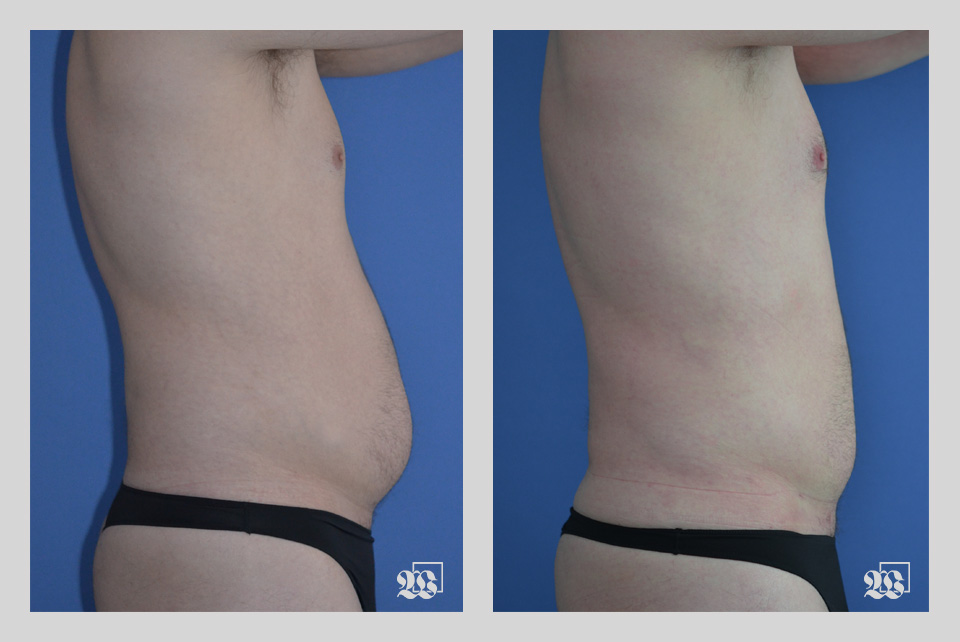
Patient 6

Patient 6
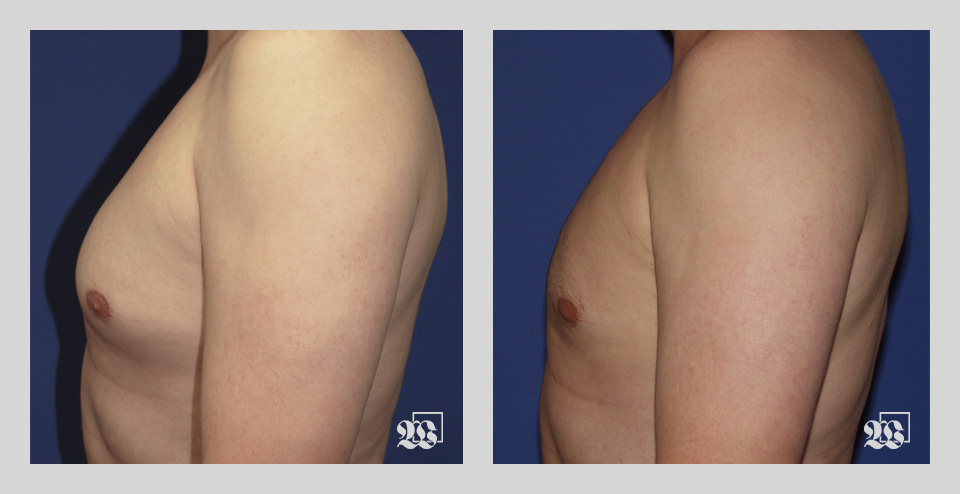
Who can be helped?
For women large buttocks are often a major problem! While most men seem to prefer the „JLo-look“, most women seem to prefer a less dramatic but more pleasing appearance. Every women wants a firm, well-defined and attractively shaped bottom – liposuction is the easiest way to achieve this desire. The hips usually must be treated at the same time to achieve good results.
A pretty back can be very charming and attractive. Unfortunately over the years there is tendency to develop folds with underlying fat deposits – rolls of fat. Bras push the fat rolls up, squezze the tissue out, and create an unattractive silhouette. Blouses and jackets are hard to find. But there is help for his problem zone as well. The Christmas tree phenomenon – symmetrical folds of skin starting in the midline and extending downwards and outwards – also tends to improve after liposuction, as the skin presents its fantastic capacity to shrink and tighten.
What is possible?
Vibration-assisted liposuction using tumescent local anaesthesia makes possible a targeted, gentle, long-term removal of the cosmetically-disturbing, excessive fat deposits. The post-operative results are of course subject to the same forces of aging as normal tissue, but are relatively permanent, as long as nutritian and exercises are adequate. Buttocks and hips, as well as hips and back, are usually treated together in a single session to obtain the most balanced results. Sometimes two sessions may be needed. In a personal consultation, I will be happy to discuss with the best approach in your individual case.
Special features
The healing process on the buttocks is often more unpleasant compared to other body sites. In the beginning it is better to keep moving or standing, and avoid sitting. The great results are rewarding for the hard initial period after surgery.
Before- / After-Pictures
The following images present the before & after – documentation of some of my patients. In a personal consultation I would be happy to show you more examples, and discuss the best approach in your case.
Patient 1
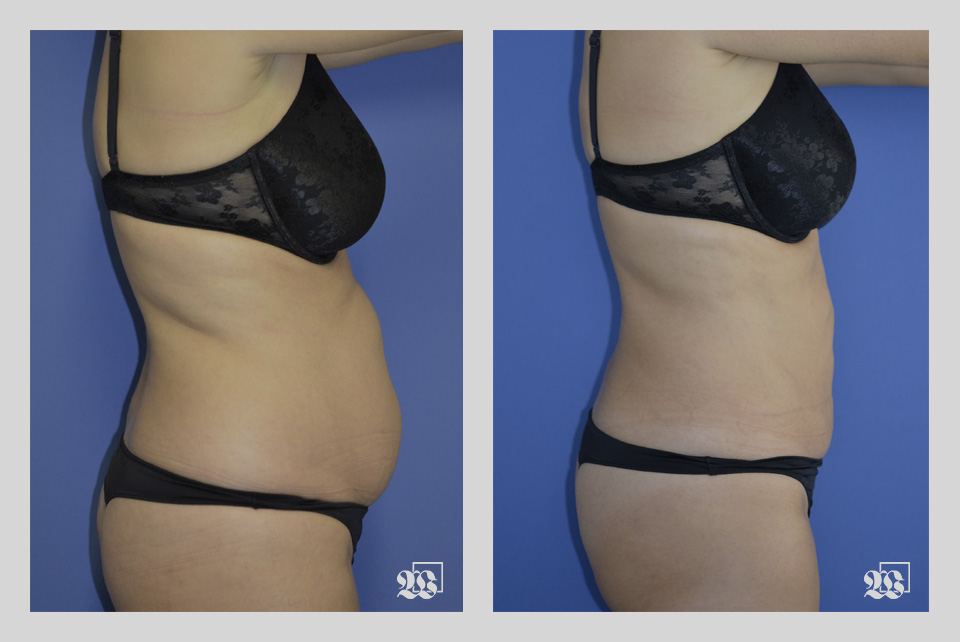
Patient 1
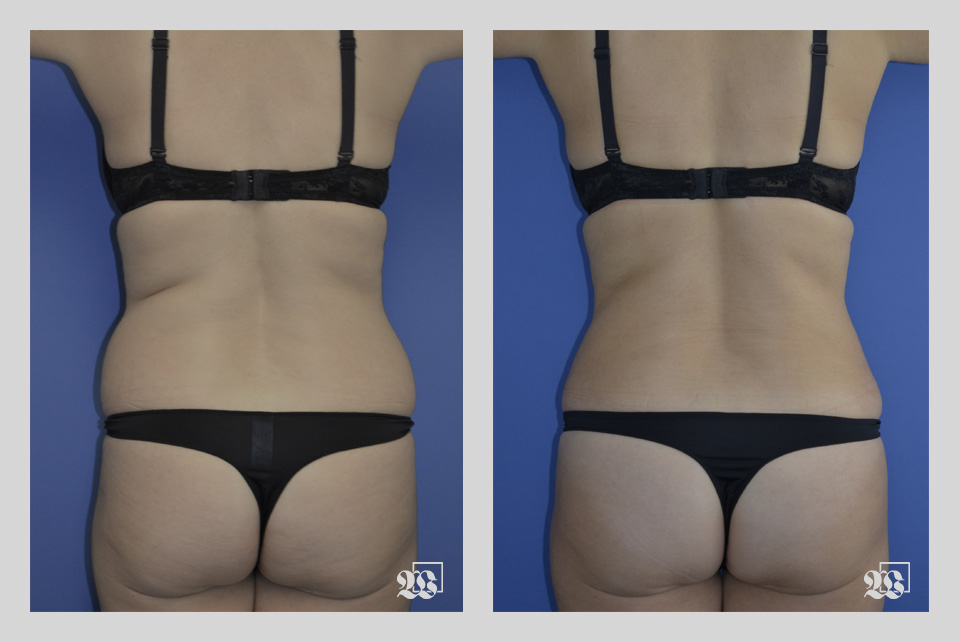
Patient 2
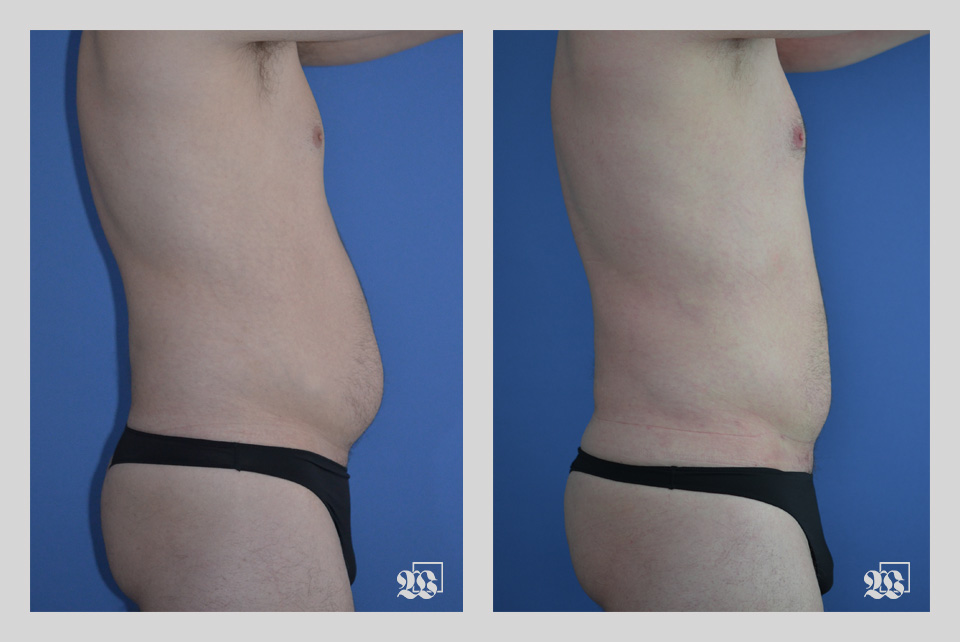
Patient 2

Patient 3

Patient 3

Who can be helped?
Quite a few women feel their upper arms are too bulky. They have troubles finding blouses and jackets that fit. The reason usually is not excessive and trained muscles, but too much subcutaneous fat around them. Normally this problem worsens with age. In about 50% of lipedema patients the arms are involved as well. The only possibility for long-term improvement of this problem is liposuction.
What is possible?
Vibration-assisted liposuction using tumescent local anaesthesia makes a long-term removal of the cosmetically-disturbing fat deposits on the outer aspects of the upper arms possible, as well as in the transitional zones to the breast and back – the “wings“. On rare cases, excessive fat deposits on the forearms have to be removed as well. The upper extremities are more elegant and mobility is improved. The main requirements for best long-term results are relatively firm tissue and skin without many wrinkles or folds. If excessive skin is present, a surgical tightening or lifting may be needed and prefered. Unfortunately this surgical procedure is often accompanied by unattractive scars. The skin surface and cellulite on the upper arms both tend to improve after liposuction. The skin over and even adjacent to the treated areas becomes recognizably tighter. In a personal consultation the best approach for you will be discussed.
Special features
A special compression bolero is recommended after liposuction surgery. It can be easily covered with a longarm T-shirt or a blouse.
Before- / After-Pictures
The following images present the before & after – documentation of some of my patients. In a personal consultation I would be happy to show you more examples, and discuss the best approach in your case.
Patient 1
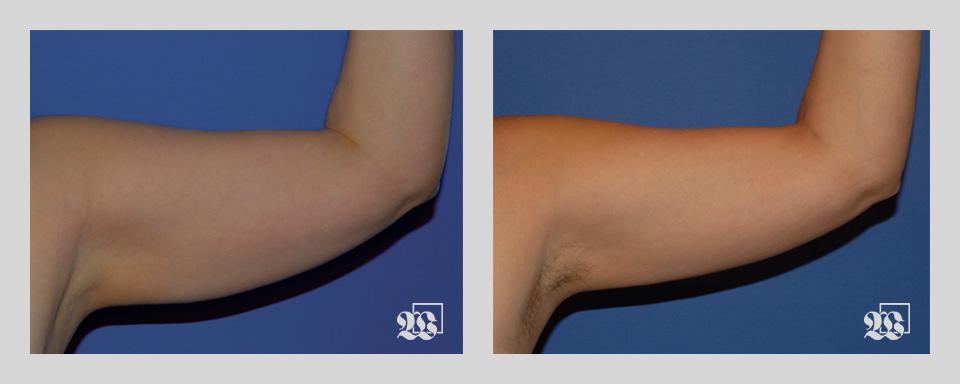
Patient 1
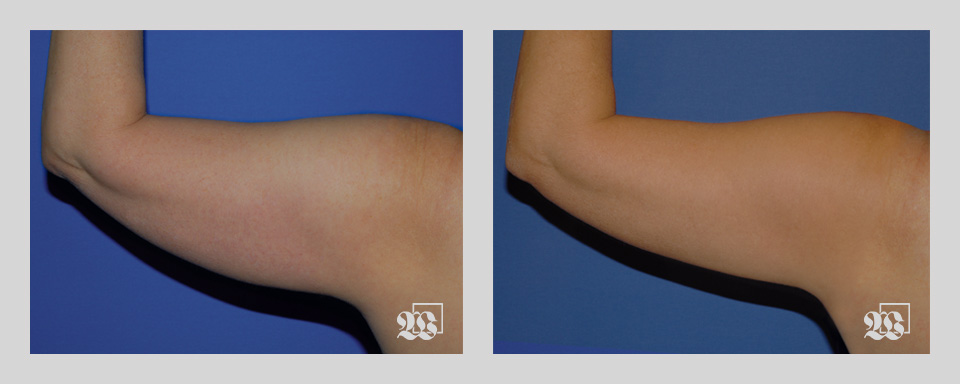
Patient 2
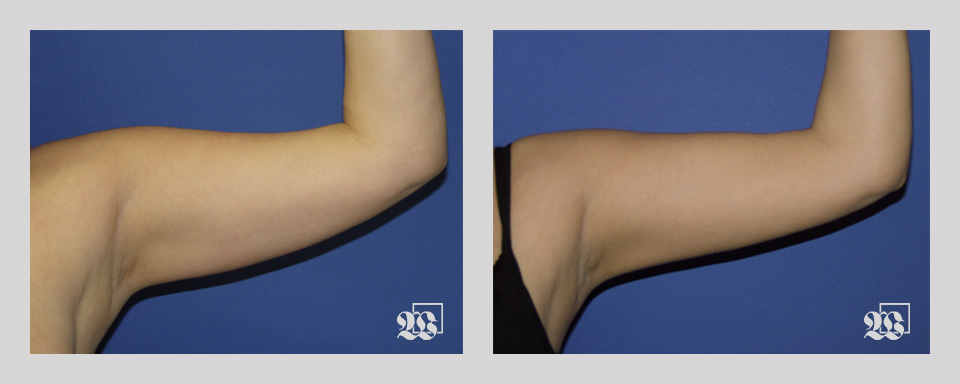
Patient 2

Patient 3
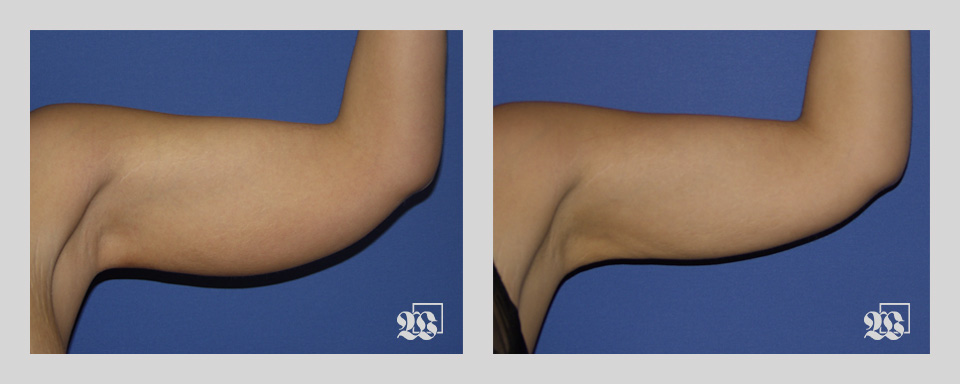
Patient 3
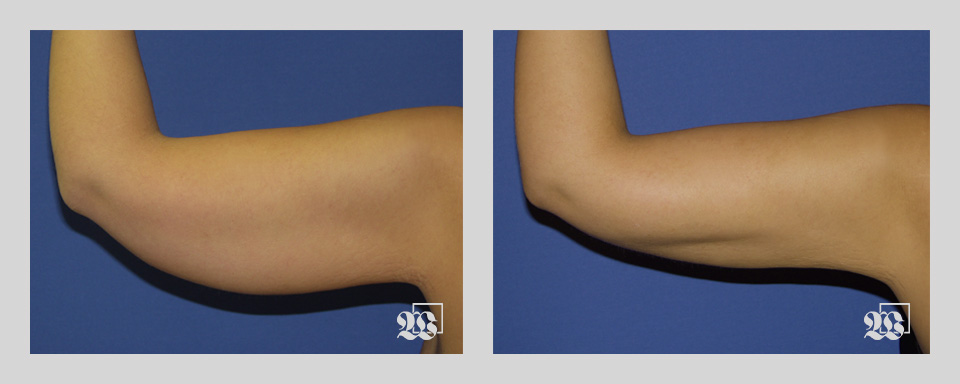
Who can be helped?
Are you starting to get a double chin, or developing jowls along your chin line, or is the skin under your chin just too loose? All these changings are signs of growing-up! Many women, and men also wish to remove their double chin! The problem gets worse with ongoing years, and it is easier to address before it becomes severe. Liposuction offers the opportunity of a tiny procedure with great effects. Downtime is short, about 2-3 days.
What is possible?
Vibration-assisted liposuction using tumescent local anaesthesia makes possible a permanent and complete removal of the fat deposits under the chin and along the jowls. The induced post-operative shrinking and tightening of the skin is sometimes the main indication for this procedure. There is a definite change towards a more youthful appearance. Good results from liposuction depend on skin quality. Massive folds and skin laxity may better suggest a neck lifting procedure. In a personal consultation, I will be happy to discuss with you the different approaches.
Special features
A special compression bandeau ensures good contact of the skin and the new underlying tissue at the right position, which is very important during the first 24 hours after neck liposuction. This bandeau must be worn only for a week, at home and during nights.
Before / after pictures
In a personal consultation I would be happy to show you some examples, and discuss the best approach in your case.
